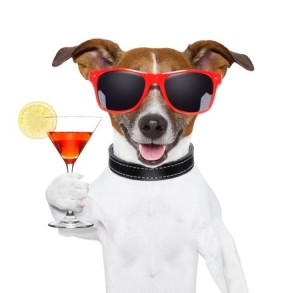Hype Over Powdered Alcohol

The Alcohol and Tobacco Tax and Trade Bureau (TTB) approved the sale of a brand of powdered alcohol named “Palcohol” on April 8, 2014 and then rescinded permission on April 21st. An article in Time said the approval for Palcohol was halted because of an error in its labels. The parent company for Palcohol, Lipsmark, said: “there seemed to be a discrepancy on our fill level, how much powder is in the bag.” So when Senator Chuck Schumer called upon the FDA to ban Palcohol, this kid named River Donaghey got the idea to try and make his own powdered alcohol and then document the aftermath for Vice in “Powdered Alcohol Got Me Drunk in the Worst Way.”
Donaghey took a recipe for powdered alcohol off the internet to mix his own, because “I didn’t want to make wimpy powdered booze like Palcohol, which you need half a pouch of to make a single drink. I wanted something strong.” Instead of mixing in 30 grams of alcohol, “which is hardly anything,” he poured in an entire fifth of 192-proof grain alcohol. He knew it was the right mixture when his eyes started to water from the fumes.
He began by ingesting “handfuls of the stuff,” then he got the idea to sprinkle it on pizza. After running into his roommate, Charlie, he gave him a pinch of the powder and they both set off for pizza. Donaghey said the powder drunk crept up on him and he went from mostly sober to buzzed to beyond. He said he thought the powdered booze blended well on pizza. He also kept getting weird looks from people with his Tupperware bowl full of powdered alcohol. They thought he was acting out a scene from the movie Scarface with a bowl full of cocaine.
After leaving the pizza shop, River and Charlie went down to the East River where they decided to set some on fire. “It turns out my homemade powdered alcohol burns like napalm.” When he tried to stamp out the fire he ended up spreading it all along the rocky bank of the river. Charlie’s shoe cut on fire. He offered some to a group of high school students, who wisely refused. But there was one more thing he had to try: snorting it. So he went back to the VICE office and “started racking lines.”
The powder turned to glue in his nose and he was immediately plugged up. The fumes burned for a few minutes and then his sinuses became numb. Charlie and he staggered home and went to their respective rooms, hoping that unconsciousness would dull the throbbing inside their heads. Charlie didn’t snort any.
I woke up at 4 AM, with my face caked with blood from my nose. At least I could breathe again. The headache had dulled to a manageable form. I went out into the living room and found Charlie sitting on the couch, sucking on a beer. He handed me one. I slumped down next to him and took a drink.
Given the above, it’s not surprising that as soon as the TBB finally approved the sale of Palcohol on March 10th, 2015, Senator Charles Schumer introduced legislation to ban the sale and distribution of Palcohol and other powdered alcohol products.
We simply can’t sit back and wait for powdered alcohol to hit store shelves across the country, potentially causing more alcohol-related hospitalizations and God forbid, deaths. This legislation will make illegal the production and sale of this Kool-Aid for underage drinking.
Reported in the Time article and on the blog, SB Nation, the original Palcohol website suggested football fans could “Bring Palcohol in and enjoy the game.” And, yes, like River Donaghey tried, they said you could snort Palcohol. “You’ll get drunk almost instantly because the alcohol will be absorbed so quickly in your nose. Good idea? No. It will mess you up. Use Palcohol responsibly.” The current Palcohol website has removed such remarks and hopes to be able to get their production facility up and running to make their product available this summer.
They argued that banning their product would only make people want it more. The ban will create a black market and lose significant tax revenue. They also said it was irresponsible to ban Palcohol, because it probably won’t work. “No one wants the government telling us what we can drink and not drink. We don’t need a nanny. The legislature exists to protect our rights to live how we choose, not to use coercive power to force their values on us.”
Lipsmark sees Palcohol as “a revolutionary new product that can help so many industries.” Airlines can reduce weight and save on fuel costs. Medical personnel want to use it as an antiseptic, especially in remote locations. It would be a “boon to outdoor enthusiasts” wanting to enjoy an adult beverage without having to carry heavy bottles of liquid. They said there has even been interest in using powdered alcohol as a fuel source. “There is talk of multiple military applications from transport fuel to fuel in a soldier’s backpack.”
McCarton Ackerman on The Fix said that the National Conference of State Legislatures reported that 47 bills in 28 states have been introduced to address powdered alcohol. Virginia, Alaska, Louisiana, South Carolina, Massachusetts and Vermont have already banned the distribution of Palcohol, “while others are also considering similar measures.” Reported by MyFOXdc.com, Maryland announced a ban on the distribution and sale of powdered alcohol on March 25th, 2015. “The likelihood of widespread Palcohol abuse – particularly among underage consumers – carries a real possibility of tragic consequences.”
Of course, Colorado has reversed its initial move to ban it and could be the first to approve its use. It is up to the Colorado Liquor Enforcement Division to write the rules for powdered alcohol sales and distribution. It could be on store shelves in a few months. The video embedded in thedenverchannel.com article illustrates the small size and ease with which the packets could be hidden. “The biggest benefit of powdered alcohol, or Palcohol, is also its biggest danger. It’s convenient, it’s easy and it can be sneaky.”
There have been some limited reports of powdered alcohol being a fake or a hoax. However, it does seem to be a real product. The question seems to be whether or not it is being hyped into becoming a fad. For example, hoaxes.org posted in 2005 that it was possible in theory to create powdered alcohol. However, it also noted that the end product from a formula used would only be 4.8% ethanol by volume, and concluded by saying: “But even if this stuff is real, I can’t imagine powdered rum tastes anything like the real thing.”
In his blog, Tim Vandergrift reported that alcohol (ethanol) is a volatile liquid, meaning that it evaporates very quickly, far faster than water. At room temperature, pure alcohol will evaporate away. It can’t be directly turned into powder, so that is why you have to mix and stabilize it with another substance (like sugar or maltodextrin, as Rive Donaghey did), and then seal it in a vapor-proof package. He then calculated the reported bulk of maltodextrin-alcohol mixture and estimated that you would need 26 packets to make an entire vodka bottle’s worth of cocktails.
Assuming you do make this damp maltodextrin substrate-with-alcohol mix, where does that leave you? With a product that’s only 12% ABV, probably costs more, and bulks much larger than simple beverage alcohol, is tough to dissolve in cold liquid and doesn’t taste like anything without the addition of lots of extra additives. Additionally you’d be consuming some form of unidentified powder in vastly higher quantities than the alcohol you’re seeking. Peachy.
It’s hard to not see this as a product that is aimed directly at under aged drinkers. Dr. Scott Krakower said the flavored powders would appeal to young people. “Youths are going to be very vulnerable to this.” And even though the company advised against it, “people will snort it”—as we saw with River Donaghey, just to see what it’s like.

